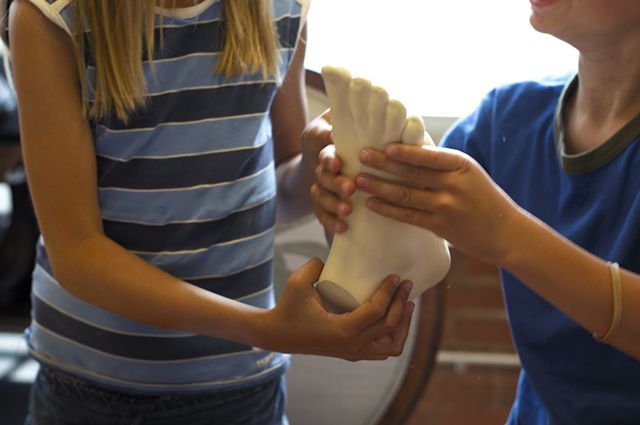This article is re-printed with permission from its original source here.
We defy the prior thinking of conventional shoes. Improper shoe sizing and shape is the primary cause of ingrown toenails, bunions, corns, hammer toes, and hallux valgus.
A proper fit accounts for the natural expansion of the foot upon ground contact. Excess waste is eliminated, along with everything that inhibits your foot's natural motion. So your foot is free to move and work the way nature intended it to; the way of its own barefoot motion. Toe wiggle freedom.

On sizing, most get it wrong
First, abandon the notion that you have a shoe size... you have a foot size. Shoes are made all over the world and apply different shapes and standards. If you measure your foot seated with a traditional measuring device like a Brannock Device and base your size on that you will likely be off by 1-2 sizes when applied to a running or hiking shoe. One shoe size is only 1/3 an inch. The Brannock is a great starting point.
Also critically important is that the Bannock device measures the widest part of the shoe at the ball. Infant feet are widest at the ends of the toes, not the ball of the foot. The natural alignment of the human foot is where the metatarsals directly align with phalanges (toes) and get wider than the ball of the foot.
Here is why most size too small:
- When a load is applied to your foot either by running (3x body weight) or with a pack weight, your foot will spread in length by up to half an inch.
- You need at least an 1/8 inch or more space on heel and toe for any sock.
- You want 1/3 to 1/2 an inch in front of your big toe to allow room for loading and splay.
- Your foot will splay 15% in width under load.
- Your foot is widest at the toes and unfortunately most shoes are not shaped this way.
Tips on sizing:
- Do not assume you are the same size as a previous shoe.
- Take your time and try several shoes on. Go run in them. Do NOT try them on sitting.
- Always try both shoes on. If your feet are slightly different in size, fit the larger foot.
- Take the removable insole out and see how your foot fits against the insole as a template... is there room at the toes or is there overlap off of the insole? If there is no room to spare or if there is overlap, this shoe will not fit.
- Keep going half a size up until the shoes are obviously too big.
- Try on shoes at end of day when your feet are most flattened and swollen.
- Try on shows with the type of sock you will wear for activity.
- For women, you may fit better in a mens shoe for width.
- Do not lace the shoes up tight. Allow spread in the midfoot and forefoot.
